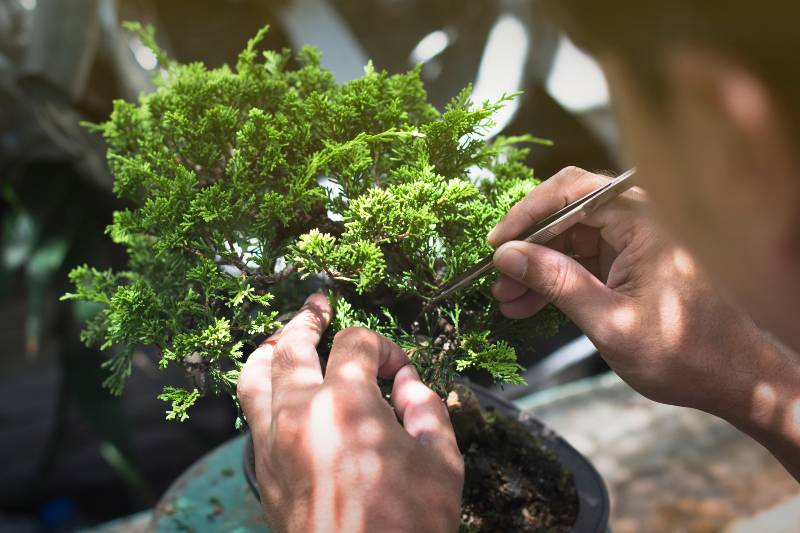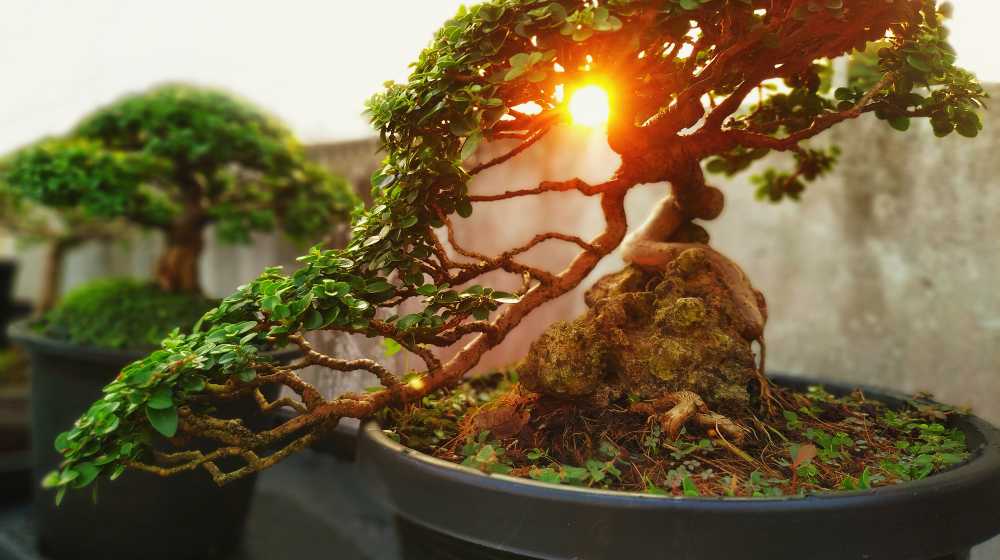“Bonsai” literally translated means simply “plant in a pot”. Originally in nature, a seed could have fallen into a “pocket” in a stone crevice, some organic material became soil, and a tree was able to grow. Perhaps Bonsai began in this way.
RELATED: 10 Common Plants that are Edible
Have Fun With Bonsai

The Japanese get the most credit for Bonsai’s development, however, the actual history is far more international and contradictory. A plant has only the requirement to be woody, to qualify as a subject for Bonsai.
Leaf size is important. Leaf size can be reduced by proper pruning but only to a point. The original “scale” of the leaf must not be too large.
In judging a good Bonsai, one’s eye moves up the tree in a fluid-like manner with no distractions, working up from the bottom of the pot to the roots, to the trunk, and up the trunk to the canopy.
The trick is to make the Bonsai look as old and mature as soon as possible. The sculptural “movement” of the trunk is vital. The trunk is the most important “beginning” point of Bonsai.
Bonsai picks up the character of a real tree and captures the spirit of nature whether mountainside, seashore, or anywhere else. Bonsai is more than simply a little tree; it creates an entire environment.
Soil type, at best, should be very fast draining, pebbles with no organic matter. (An organic mix could be created, but it must be very fast draining).
The faster draining the soil, the more fibrous roots are created (and Bonsai should have all fibrous roots due to their efficiency in taking up nutrients).
Bonsai goes through seasonal changes, just like the leaves, buds, fruits, and colors of trees in nature.
It is a misconception that Bonsai is a plant that is “tortured”. This is not at all true. The opposite is a fact, where the plant is very natural and its systems extremely efficient.
Too much attention is usually the cause of the death of a Bonsai. Water only when needed is the trick. Not bone dry but not too wet (only on the dry side of moist).
Moisture can be checked with a piece of a chopstick inserted into the soil, much like an oil dipstick. The more light, the better.
Bonsai has a front, a back, and two sides. Make sure the “front” is determined before potting.
Bonsai root mass must be anchored to the bottom of the pot with wire to keep the tree stable. The mass of fibrous roots in fast-draining soil is a “sponge-like” machine for the roots to have everything they need to take up nutrients efficiently. If there are lots of roots, there will be lots of leaves.
In 40 to 50 years a Bonsai develops just like a “large” tree in nature. The crown gets rounder, the branches tend to droop and the trunk gets thicker.
Always water from above. Do not “dunk” the pot into a sink full of water. Water leaves also to wash off dust and insects. Homes are on the dry side. Misting daily is OK (or place pot on top of a humidity tray of moist pebbles).
Liquid fertilizer (balanced) is best for Bonsai. Do not use sticks, balls, etc. Compost tea should not be used (it is not good to have more microscopic bacteria feeding on the soil).
Bonsai should be accented with a “human, ballet-like form” with foliage at various spots. Eliminate vertical and directly downward growing branches.
Keep branches horizontal or slightly downward. Lots of “clip and grow”, “clip and grow”, repeatedly for proper training with lots of directional pruning. Cut back horizontal branches to healthy, green leaves, always taking off new ones growing directly up or down. Once any branch grows to (5) new leaves, cut it back to (2).
There is no such thing as “instant Bonsai”. Always let grow, cut back, let grow, cut back.
When cutting off branches, cut flush to the trunk. Use special branch pruners designed for Bonsai. This is the opposite of Horticultural training on the pruning of branches on large trees. The tree will “slow down” in winter with little pruning necessary as (5) leaves won’t develop so fast.
“Bonsai has a beginning, but no end. A bud today becomes a branch tomorrow. The farther it is pursued, the farther away it is” (Chase Rosade).








